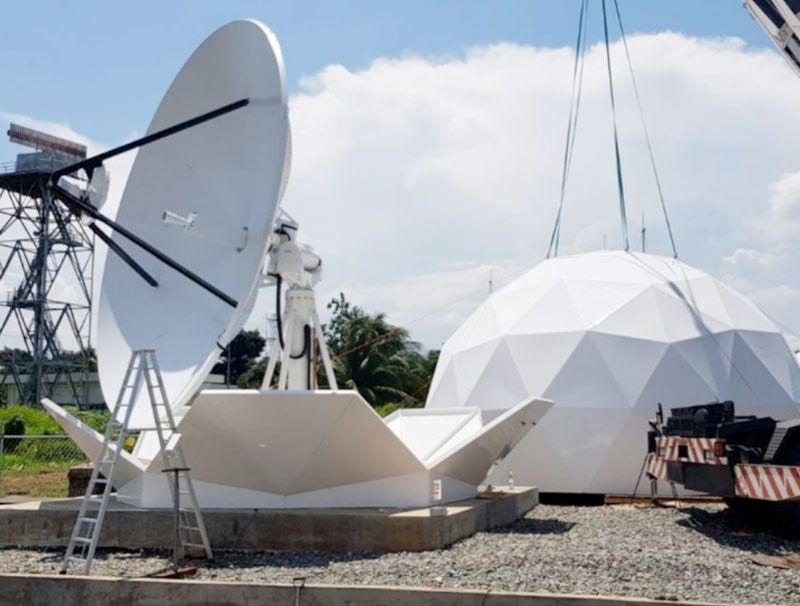New satellite data receiving station opens in Davao

MANILA, Philippines — The Department of Science and Technology (DOST) has formally launched a new satellite data receiving station in Davao City.
Science Secretary Fortunato dela Peña led the inauguration of the new Ground Receiving Station (GRS) at the Civil Aviation Authority Philippines Transmitter Facility on June 30.
The facility, the largest tracking antenna in the country so far, will receive satellite data that may be used in pre- and post-disaster monitoring, among other scientific research and operational activities.
The new station will provide additional capacity and redundancy to the first station launched three years ago at the DOST-Advanced Science and Technology Institute (ASTI) in Quezon City.
The GRS, which is part of the Philippine Earth Data Resource and Observation (PEDRO) Center, serves as the tracking antenna for earth observation satellites.
The PEDRO Center receives images from various earth-observation satellites, including the country’s Diwata-1 and Diwata-2 microsatellites, as well as other supported foreign satellites.
According to ASTI, the Davao station will serve as an auxiliary antenna for the PEDRO Center, enabling it to receive earth surface information even in cases of catastrophes and impending threats of disasters in Manila.
“Designed to communicate with earth observation satellites by receiving, processing, and distributing space-borne imagery, these ground receiving stations also have direct access to a broad range of optical (high-resolution, multispectral) and synthetic aperture radar (cloud-penetrating, day-night-imaging) satellite data,” DOST-ASTI said.
“Simply put, these ground facilities can upload commands and can download data captured by satellites deployed in space,” it added.
The agency said the Davao station will be remotely operated and will be used for initial tests for the time being.
Compared to the station in Quezon City with only 3.7-meter satellite- tracking antenna, the Davao station has a 7.3-meter antenna which will allow more efficient download of images at a higher bandwidth.
“Both antennas are contained inside a radome, a special spherical structure enclosing the antennas from physical forces while still allowing reception of satellite signals,” said the DOST-ASTI.
“The radome can withstand temperatures up to 80 degrees Celsius, wind speed of up to 320 kilometers per hour, and rainfall at 100 millimeters per hour for one hour, thereby prolonging the effective lifespan of the antennas,” it added.
With the new station operational, DOST-ASTI said that reception, processing and satellite data storage cycle will open more opportunities to promote inclusive innovation, reaching more Filipino scientists and researchers in return.
“The GRS facilities of the PEDRO Center are vital infrastructure for pre- and post-disaster monitoring that supports our disaster risk reduction agencies,” it added.
- Latest




























